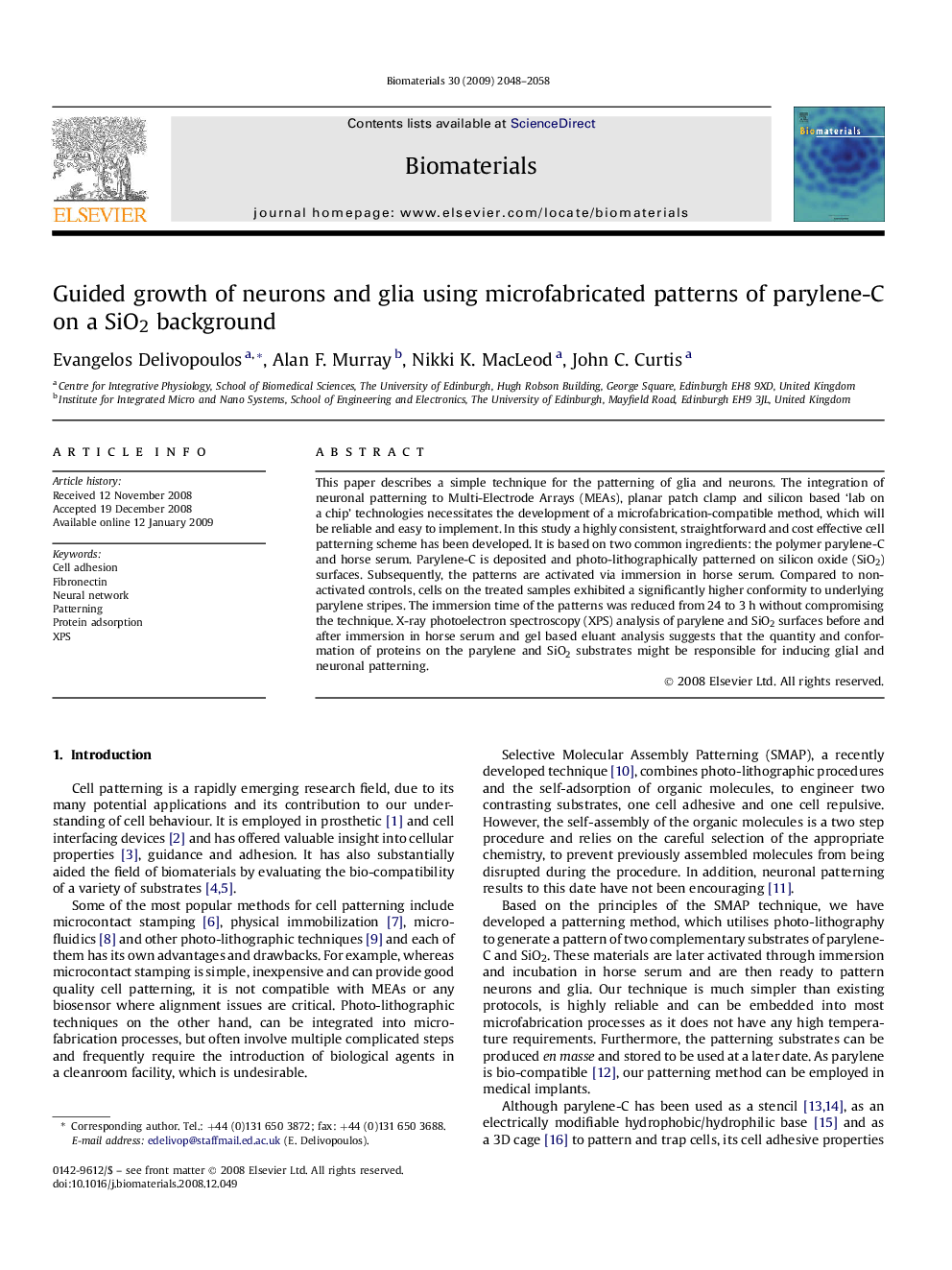| Article ID | Journal | Published Year | Pages | File Type |
|---|---|---|---|---|
| 8969 | Biomaterials | 2009 | 11 Pages |
This paper describes a simple technique for the patterning of glia and neurons. The integration of neuronal patterning to Multi-Electrode Arrays (MEAs), planar patch clamp and silicon based ‘lab on a chip’ technologies necessitates the development of a microfabrication-compatible method, which will be reliable and easy to implement. In this study a highly consistent, straightforward and cost effective cell patterning scheme has been developed. It is based on two common ingredients: the polymer parylene-C and horse serum. Parylene-C is deposited and photo-lithographically patterned on silicon oxide (SiO2) surfaces. Subsequently, the patterns are activated via immersion in horse serum. Compared to non-activated controls, cells on the treated samples exhibited a significantly higher conformity to underlying parylene stripes. The immersion time of the patterns was reduced from 24 to 3 h without compromising the technique. X-ray photoelectron spectroscopy (XPS) analysis of parylene and SiO2 surfaces before and after immersion in horse serum and gel based eluant analysis suggests that the quantity and conformation of proteins on the parylene and SiO2 substrates might be responsible for inducing glial and neuronal patterning.
